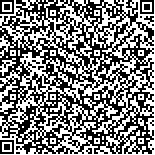|
| 引用本文: | 张玉,赵鹏,张晓梅,周毅.硫化物胁迫对海草影响的研究进展[J].海洋科学,2020,44(11):123-131. |
| |
|
| |
|
|
| 本文已被:浏览 959次 下载 912次 |

码上扫一扫! |
|
|
| 硫化物胁迫对海草影响的研究进展 |
|
张玉1,2, 赵鹏3, 张晓梅1,4, 周毅1,4
|
|
1.中国科学院海洋研究所海洋生态与环境科学重点实验室, 山东 青岛 266071;2.中国科学院大学, 北京 100049;3.自然资源部第四海洋研究所, 广西 北海 536000;4.青岛海洋科学与技术试点国家实验室海洋生态与环境科学功能实验室, 山东 青岛 266237
|
|
| 摘要: |
| 硫酸盐的还原作用是沿海海洋沉积物中有机质厌氧矿化的主要终点过程,该过程会生产有毒的硫化物。迄今为止,在所研究的大多数海草中都发现了硫化物侵入植株组织内部的现象,而且在温带和热带区域已经发生过多起因为草床沉积物中硫化物浓度过高而导致海草大面积死亡的事件。本文综述了近三十年来硫化物胁迫对海草影响的相关研究工作,主要内容包括以下四方面:(1)硫化物对海草产生胁迫的环境条件主要有缺氧、缺铁、有机质富集以及高盐;(2)硫化物侵入海草组织的途径是由根部吸收进而转移到地下茎和叶片中,而随着时间的推移,硫化物在海草组织中最终主要以单质硫、硫酸盐以及有机硫的形式存在;(3)硫化物对海草的危害主要是通过直接破坏海草的分生组织并进一步抑制海草的光合作用发生的,对海草的生长带来严重的负面影响;(4)不同海草物种受硫化物的侵入情况不同,主要与海草物种的形态学和内部结构差异有关。最后提出三方面的展望,包括硫化物胁迫下海草组织、细胞层面的深入研究,分子应答机制的研究以及有效的海草床修复手段的探索。本文有助于全面了解海草与硫化物胁迫之间的关系,并为将来开展更深入的研究提供参考。 |
| 关键词: 硫化物胁迫 海草 侵入 修复 |
| DOI:10.11759/hykx20200224001 |
| 分类号:P76 |
| 基金项目:国家自然科学基金项目(41606192);国家科技基础性工作专项(2015FY110600);国家重点研发计划“蓝色粮仓科技创新”重点专项(2019YFD0901301) |
|
| A review of the effects of sulfide stress on seagrass |
|
ZHANG Yu1,2, ZHAO Peng3, ZHANG Xiao-mei1,4, ZHOU Yi1,4
|
|
1.CAS Key Laboratory of Marine Ecology and Environmental Sciences, Institute of Oceanology, Chinese Academy of Sciences, Qingdao 266071, China;2.University of Chinese Academy of Sciences, Beijing 100049, China;3.Fourth Institute of Oceanography, Ministry of Natural Resources, Beihai 536000, China;4.Laboratory for Marine Ecology and Environmental Science, Pilot National Laboratory for Marine Science and Technology(Qingdao), Qingdao 266237, China
|
| Abstract: |
| Sulfate reduction, which produces toxic sulfides, is considered the main terminal process of the anaerobic mineralization of organic matter in coastal marine sediments. Sulfide invasion into seagrass tissues has been observed in most seagrasses studied to date. Moreover, several large-scale seagrass die-off events have been documented in the temperate and tropical regions because of the high concentration of sulfide in sediments. This paper reviews studies describing the effects of sulfide stress on seagrass in the last 30 years. The four main findings are as follows. (1) The environmental conditions of sulfide invasion into seagrass tissues include hypoxia, iron deficiency, organic matter enrichment, and high salinity. (2) Sulfide invasion is initiated from the root and then spreads to the rhizome and leaves. In addition, sulfide in seagrass tissues eventually takes the forms of elemental sulfur, sulfate, and organic sulfur. (3) The harm caused by sulfides to seagrass mainly comes from the direct destruction of meristems and subsequent inhibition of photosynthesis, which seriously impedes growth. (4) Different species of seagrass suffer different extents of sulfide invasion. These variances may be attributed to differences in the morphology and internal structure of the grasses. In the end, three aspects of expectation are proposed, including a further study at the tissue and cellular level, the molecular response mechanism of seagrass and effective methods of seagrass bed restoration under sulfide stress. The present paper contributes to the understanding of the relationship between seagrass and sulfide stress and provides suitable references for future research. |
| Key words: sulfide stress seagrass invasion restoration |
|
|
|
|
|
|
